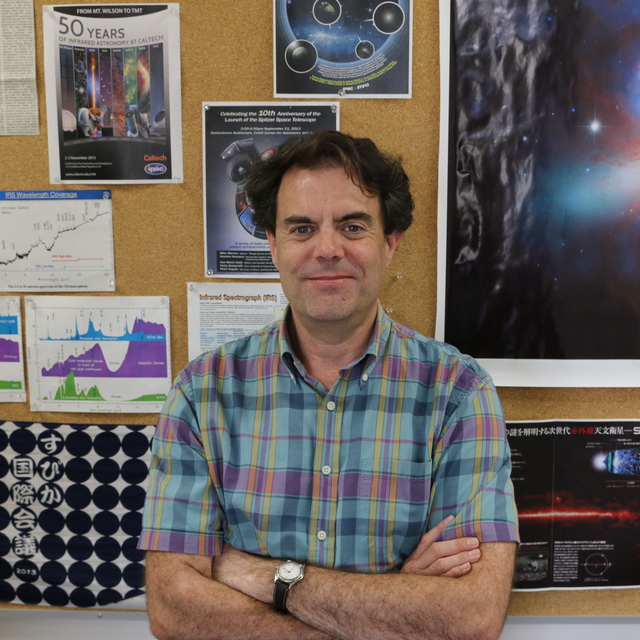April
2020
•
2020ApJ...893..149P
Authors
•
Privon, G. C.
•
Ricci, C.
•
Aalto, S.
•
Viti, S.
•
Armus, L.
•
Díaz-Santos, T.
•
González-Alfonso, E.
•
Iwasawa, K.
•
Jeff, D. L.
•
Treister, E.
•
Bauer, F.
•
Evans, A. S.
•
Garg, P.
•
Herrero-Illana, R.
•
Mazzarella, J. M.
•
Larson, K.
•
Blecha, L.
•
Barcos-Muñoz, L.
•
Charmandaris, V.
•
Stierwalt, S.
•
Pérez-Torres, M. A.
Abstract
•
Enhanced emission from the dense gas tracer HCN (relative to HCO+) has been proposed as a signature of active galactic nuclei (AGN). In a previous single-dish millimeter line survey we identified galaxies with HCN/HCO+ (1-0) intensity ratios consistent with those of many AGN but whose mid-infrared spectral diagnostics are consistent with little to no (≲15%) contribution of an AGN to the bolometric luminosity. To search for putative heavily obscured AGN, we present and analyze NuSTAR hard X-ray (3-79 keV) observations of four such galaxies from the Great Observatories All-sky LIRG Survey. We find no X-ray evidence for AGN in three of the systems and place strong upper limits on the energetic contribution of any heavily obscured ( ${N}_{{\rm{H}}}\gt {10}^{24}$ ${\mathrm{cm}}^{-2}$ ) AGN to their bolometric luminosity. The upper limits on the X-ray flux are presently an order of magnitude below what XDR-driven chemistry models predict are necessary to drive HCN enhancements. In a fourth system we find a hard X-ray excess consistent with the presence of an AGN, but contributing only ∼3% of the bolometric luminosity. It is also unclear if the AGN is spatially associated with the HCN enhancement. We further explore the relationship between HCN/HCO+ (for several Jupper levels) and ${L}_{\mathrm{AGN}}$ / ${L}_{\mathrm{IR}}$ for a larger sample of systems in the literature. We find no evidence for correlations between the line ratios and the AGN fraction derived from X-rays, indicating that HCN/HCO+ intensity ratios are not driven by the energetic dominance of AGN, nor are they reliable indicators of ongoing supermassive black hole accretion.
Links




